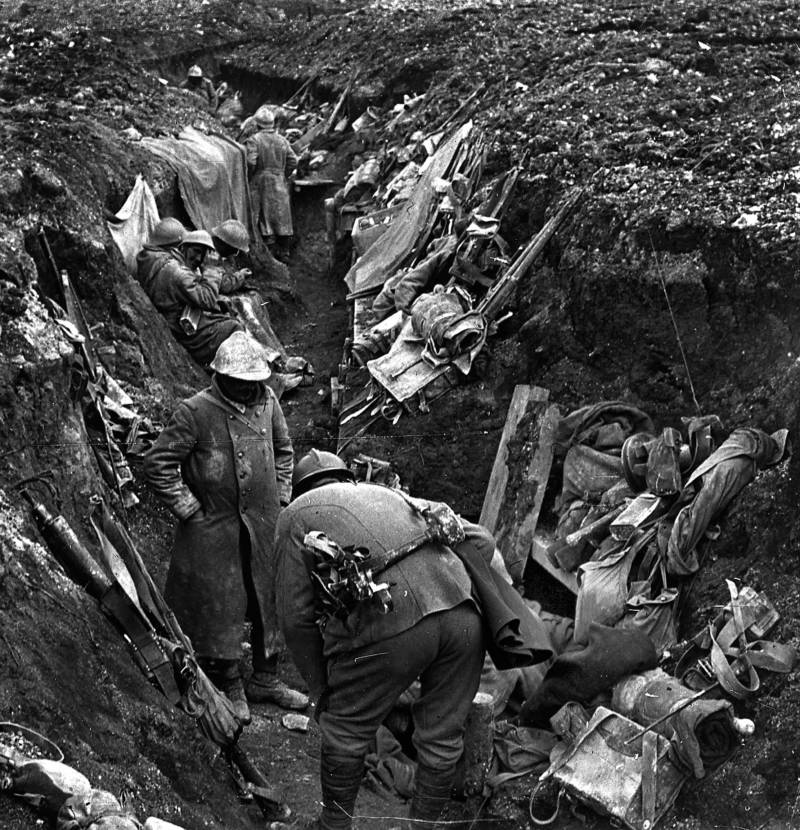

Later, in 1928, the Lafayette Escadrille Memorial was dedicated at the Villeneuve-l'Étang Imperial Estate, in Marnes-la-Coquette, Hauts-de-Seine, outside of Paris, France. On 4 July 1923, the President of the French Council of State, Raymond Poincaré, dedicated a monument in the Place des États-Unis, Paris, to the Americans who had volunteered to fight in World War I in the service of France. These American volunteers were remembered in France with memorials after the war. Nonetheless, the squadron was credited with important aerial successes, and squadron members eventually served as the foundations for America's own air services. Verdun was the first of the great industrial battles of the First World War where industrial might and capacity enabled the fighting to reach unparalleled. As a result, the squadron suffered heavy losses, both at Verdun, and throughout the rest of the war. It was very dangerous work - the planes were often flimsy and unreliable, the air-combat was treacherous, and field conditions on the ground brought diseases to crews and pilots alike. Gros, medical director of the American Field Service, convinced the French government to create air units fighting for France, made up of expatriate American fliers. The Lafayette Escadrille was created in 1916, after Dr.

BATTLE OF VERDUN WW1 DRIVERS
Like the American ambulance drivers of the AFS, these aviators skirted America's neutrality in the war by going to France and joining locally-created organizations. Similarly, the American aviators of Verdun also created an important legacy. The model set up by the AFS was used by the American Army for many years as a standard. The combat protocols and medical methods established by these American ambulance drivers had a lasting impact on the emergency services during wartime. In Verdun, nearly 2,500 AFS volunteers helped to evacuate some 400,000 wounded French. The American Field Service (AFS) was one of them. American volunteers played a significant role in the front line of the battle, performing as an ambulance drivers, fighter pilots, soldiers, and other duties.ĭuring the initial stage of the war, several American ambulance organizations were created in France. The United States did not declare its participation in the Great War until 1917, however some unofficial assistance from was already being provided for the Allies by the start of Verdun. In the battle, some 800,000 people were killed, wounded, or were declared missing. Verdun became one of the longest and costly battles in human history. This week marks the centennial of the Battle of Verdun, which began February 21st, 1916, and ran for 303 days. A French counter-attack to take the Bois des Caures failsĢ4 February – The German advance takes several other key points, pushing the 51st Division off the Bois des Fosses and capturing Ornes village on the Meuse. The French second line of defences collapsesĢ5 February – Fort Douaumont is taken by the German 24 th Infantry Regiment.Recalling the American volunteers in the Battle of Verdun The hill is taken and Driant is killedĢ3 February – Brabant is captured, and Samogneux’s defence looks precarious. The Bois d’Haumont and the Bois d’Herebois fall to the Germans, but Driant’s Chasseurs just manage to hold on to the Bois des CauresĢ2 February – The Germans renew their artillery bombardment at first light, then use a greater weight of forces to overwhelm the defence of the Bois des Caures. – Bombardment ceases and the German infantry assault begins. – German artillery units begin their preparatory bombardment at VerdunĤ.45 a.m. Drianty’s Defence and Douaumont’s Fall 1916Ģ1 February – The Battle of Verdun begins with a lengthy German preparatory bombardment and an infantry assaultĤ.00 a.m.

A timeline of the Battle of Verdun, which lasted for 303 days between February and December 1916 and became the longest and one of the most costly battles in human history.


 0 kommentar(er)
0 kommentar(er)
